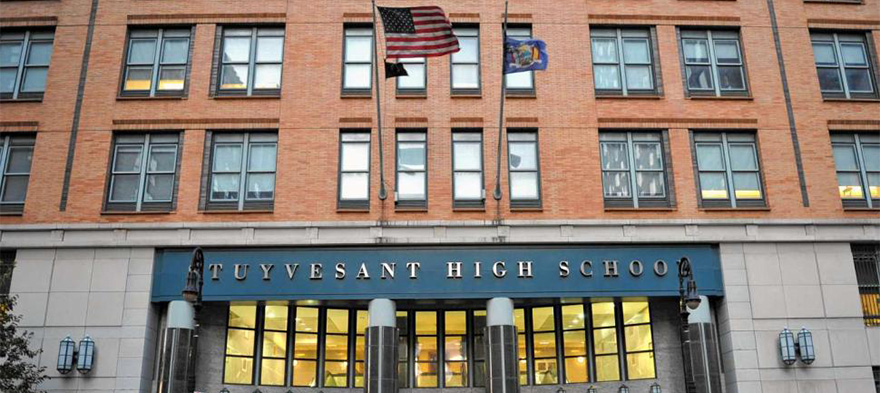
Jul 26, 2016 12:00:00 AM
Rather than starting from ideology, let’s start from what’s best for our kids…We don’t have time for these education wars.Burris is opting to start from her charter-hating ideology. Once again she was given free reign in a guest column published Sunday by (surprise, surprise!) Valerie Strauss in The Washington Post. Her argument boils down to this: Public charters should not be called public because, well, Burris doesn’t believe in them. She doesn’t like the autonomy they have. She doesn’t like their discipline policies. She doesn’t like the fact that millions of families are fleeing traditional neighborhood schools to attend them (and taking some of their per-pupil dollars with them). At least Burris is honest about one thing: What teachers unions really hate about charters is that their teachers (mostly) do not belong to the unions—and do not pay union dues. She tries to argue that charter antipathy runs much deeper than unionism for “those who deeply believe in the mission of public schools.” But as a fellow public school missionary, I don’t buy it. She suggests that most charters are run by large for-profit corporations, when in fact just the opposite is true—two-thirds of all charters are independently run non-profits operating a single school (the so-called “mom and pop charter schools” that don’t fit neatly into the mass privatization rhetoric), and only 13 percent are run by for-profit companies (although they tend to draw a disproportionate share of the negative stories and criticism about the sector, and rightly so). But it is the “creaming” critique that unmasks the true hypocrisy in this anti-charter movement. Because if you are going to argue that schools are not public unless they “educate all,” then you cannot defend unionized magnet schools, gifted academies, and other “selective” schools that only educate students with stellar scores, grades and behavior records. As Burris wrote:
One of the strengths of a true public school is its ethical and legal obligation to educate all. Public school systems enroll any student who comes into the district’s attendance zone from ages 5 to 21—no matter their handicapping condition, lack of prior education, first language, or even disciplinary or criminal record. Not only will empty seats be filled at any grade, if there is a sudden influx of students, classes must be opened.Under that definition, New York City’s uber-elite Stuyvesant High is not a “true public school” in any way, shape or form. At Stuyvesant High (which, by the way, employs another rabid charter/Teach For America critic, math teacher Gary Rubenstein) only 3 percent of students are African-American or Latino and fewer than 1 percent are students with disabilities—this is a system where nearly 70 percent of students are Black or brown, and 19 percent have disabilities. You can’t defend creating elite, middle-class enclaves with disproportionately low populations of Black, brown and special need students just because those schools are run by traditional district bureaucracies and staffed by union members. Charters might have complicated application processes that discourage certain families, but admission is still by chance through a lottery—whereas admission to some selective high schools is harder to secure than admission to the Ivies. As I mentioned to my neighbor, Ms. Burris is free to hate charters and by all means, she can go after the ones badly serving children and the public trust. But she loses credibility when she tries to deny the facts. Charter schools are public schools. And Hillary is not going to change her tune on that fact, no matter how many “public education friends” are watching.
Tracy Dell’Angela is a writer, education nonprofit executive director and a mom passionate about education improvements. Previously, Tracy was Director of Outreach and Communications for the Institute of Education Sciences (IES) at the U.S. Department of Education in Washington, D.C. She came to IES from the University of Chicago Consortium on Chicago School Research, which produces research that drives improvement in Chicago and nationwide. She also served as Senior Project Director for 100Kin10 at the University of Chicago and was Director of Program Investments and Partnerships for the Chicago Public Education Fund. Tracy spent most of her career as an award-winning newspaper journalist, including 12 years at the Chicago Tribune as an education reporter covering national policy and the Chicago Public Schools. A Californian by birth but a Chicagoan in spirit, Tracy attended University of Chicago as a master's student in social sciences and earned a B.A. in journalism and political science from San Diego State University.
The story you tell yourself about your own math ability tends to become true. This isn’t some Oprah aphorism about attracting what you want from the universe. Well, I guess it kind of is, but...
If you have a child with disabilities, you’re not alone: According to the latest data, over 7 million American schoolchildren — 14% of all students ages 3-21 — are classified as eligible for special...
The fight for educational equity has never been just about schools. The real North Star for this work is providing opportunities for each child to thrive into adulthood. This means that our advocacy...
Your donations support the voices who challenge decision makers to provide the learning opportunities all children need to thrive.
Ed Post is the flagship website platform of brightbeam, a 501(c3) network of education activists and influencers demanding a better education and a brighter future for every child.
© 2020–2024 brightbeam. All rights reserved.
Leave a Comment